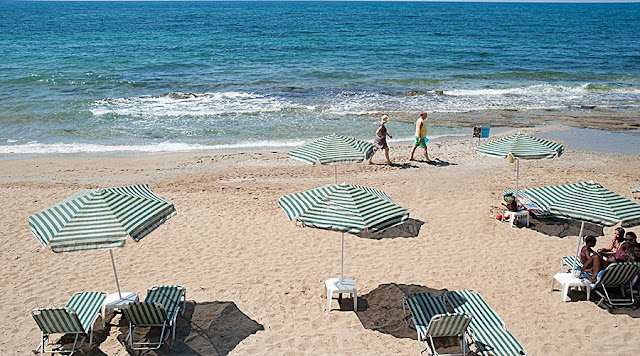Saktouria - Rethymno - Crete
Saktouria is a traditional village in the municipality of Agios Vassilios, in Rethymno, Crete.
Saktouria bordering south with the Libyan Sea. The entire south side of the village is characterized by a small paradise of infinite natural beauty.
There are 11 kilometers of beaches in the periphery of the village. with the most famous beach the beach of Agios Pavlos here is a natural rock, unique in the world, as the geologists call it.
the history of the village
Remains of Minoan settlements dating from the Middle Minoan II to the Late Minoan period have been excavated at the sites of Agios Ioannis and Agios Markos.
The village is mentioned by Francesco Barocci in 1577 as Sacturia in the province of St. Basil. In the Venetian census of 1583 by Kastrofylakas it is mentioned as Sacturia with 193 inhabitants and 100 due chores, while Vasilikata also mentions the village in 1630, under the name Sacturia. In the Ottoman census of 1659 it is referred to as Sacturya po ve Kato, with 20 houses. In the work Cretan by Michael Chourmouzis, in 1842, he is referred to as Sachtouroi. Stergios Spanakis etymologizes the name of the village from sahtouri, a type of sailing ship.
In the census of 1881 it is mentioned as Sachtouria in the municipality of Melampon and they had a purely Christian population, 360 inhabitants.
In the 1900 census it had 408 inhabitants. In the 1920 census it is mentioned as the seat of a homonymous rural municipality. In 1925, Saktouria was designated the seat of a homonymous community, until the Kapodistrian administrative division, when the village was annexed to the Municipality of Lampi. Kato Saktouria was recognized as an independent settlement in 1940 and Agios Pavlos in 1991.
During the German occupation, the inhabitants of Saktouria first helped to hide and then the allied troops fled from Crete. At the port of Agios Pavlos they approached underwater, on the one hand they provided ammunition to the resistance and on the other hand they removed allies from the island. For this action the Germans completely set fire to the village on May 4, 1944 and imprisoned all the men over 15. Eventually they executed 15 of them.














Σχόλια
Δημοσίευση σχολίου